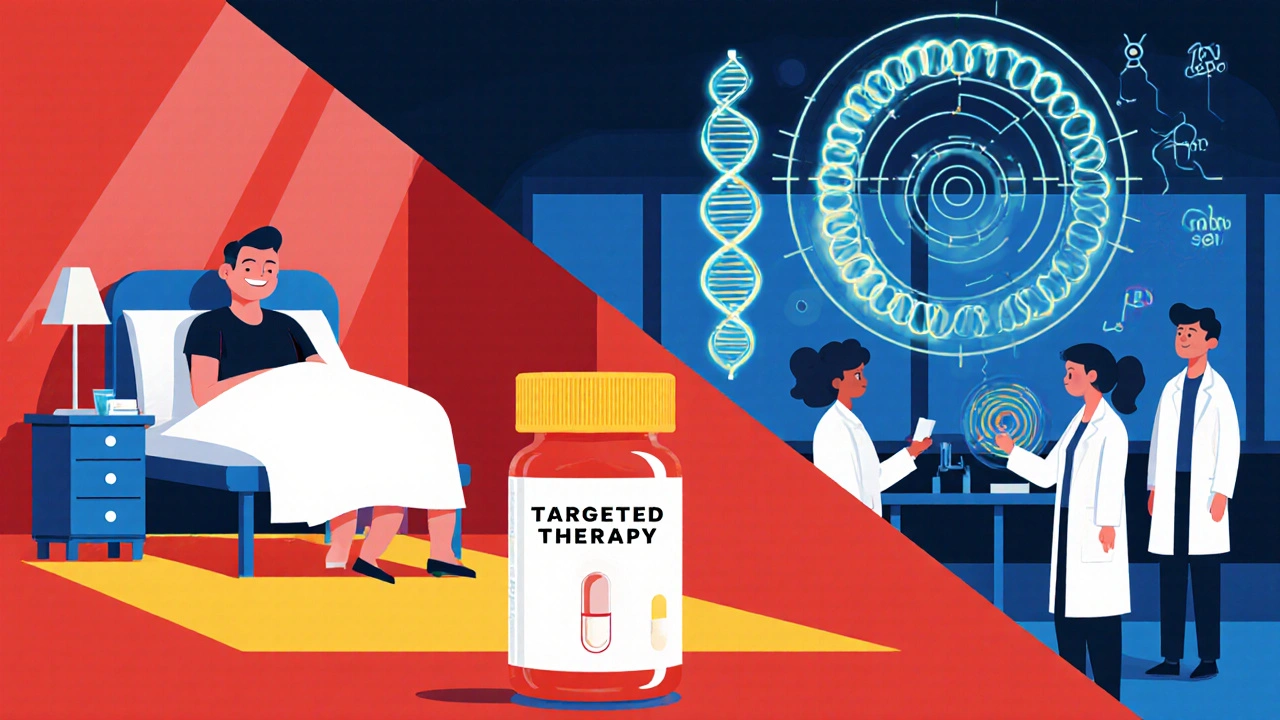CAR‑T Therapy: What You Need to Know
When you hear CAR‑T, a cutting‑edge cancer treatment that reprograms a patient’s own T cells to hunt tumors (also called Chimeric Antigen Receptor T‑cell therapy), it can feel like science fiction. In reality, CAR‑T is a form of immunotherapy, the use of the body’s immune system to fight disease that has reshaped how oncologists approach blood cancers. The therapy works by extracting T cells, inserting a synthetic receptor that recognizes a specific cancer marker—most commonly the CD19 antigen, a protein found on many B‑cell malignancies—and then expanding those engineered cells before infusing them back into the patient. This engineered army can locate and destroy cancer cells with remarkable precision. CAR‑T isn’t a one‑size‑fits‑all solution; it requires sophisticated gene‑editing tools, careful patient selection, and vigilant monitoring for side effects like cytokine release syndrome, a potentially severe inflammatory reaction that can occur after immune activation. Understanding these moving parts helps you grasp why the therapy has both soaring success stories and serious safety considerations.
Key Concepts Behind CAR‑T Success
At its core, CAR‑T encompasses three major steps: cell collection, genetic modification, and reinfusion. The collection phase uses a process called apheresis to gather enough T cells for modification. During genetic modification, clinicians employ viral vectors or newer CRISPR‑based methods—both examples of gene editing—to insert the CAR construct that directs the T cell to its target. Once the cells express the receptor, they’re cultured in a bioreactor until they reach therapeutic numbers. This manufacturing pipeline mirrors a small‑scale production line, and each batch is customized to the individual patient, reinforcing the personalized nature of the treatment. Safety hinges on managing cytokine release syndrome, which can cause fever, low blood pressure, and organ dysfunction if unchecked. Strategies such as early use of tocilizumab, an IL‑6 blocker, and steroids have become standard practice to blunt the storm without wiping out the engineered T cells. Another safety layer involves “suicide switches” built into some CAR designs, allowing clinicians to deactivate the cells if toxicity spikes. These checks illustrate how CAR‑T requires a blend of immunology, molecular biology, and critical care expertise—an interdisciplinary dance that makes the therapy both powerful and complex.
Clinically, CAR‑T has proven most effective against B‑cell acute lymphoblastic leukemia (ALL) and certain lymphomas, where CD19 is abundant. Ongoing trials are expanding the target repertoire to include antigens like BCMA for multiple myeloma and EGFRvIII for glioblastoma, widening the pool of patients who might benefit. Real‑world data show durable remissions lasting years for many responders, yet a subset relapses because cancer cells lose the target antigen or the CAR‑T cells become exhausted. Researchers are tackling these gaps by engineering dual‑target CARs, adding checkpoint‑inhibition modules, and tweaking the cell’s metabolic pathways. Below, you’ll find a curated selection of articles that dive deeper into each of these topics— from the nitty‑ gritty of Atazanavir’s lung effects to the latest comparisons of diabetes medications. Whether you’re a clinician looking for practical dosing tips or a patient wanting to understand what to expect, the posts below break down the science into bite‑size, actionable insights.
How Targeted Therapy is Changing Leukemia Treatment
Explore how targeted therapy transforms leukemia treatment, from key drug classes and real-world success stories to practical patient checklists and future advances.
Read more
